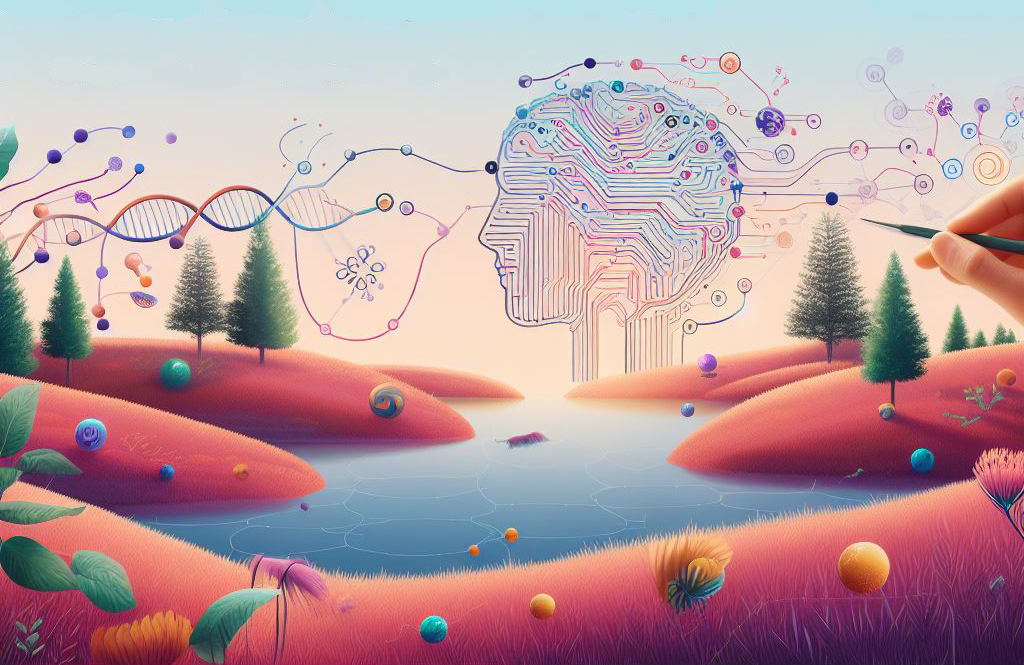What will schools be like when AI is embedded into our lives? Much like they are now or perhaps something radically transformed? Perhaps we can see clues to the future by looking into the past?
I was interested to hear Satya Nadella, the CEO of Microsoft, describing these days as being as “exciting… like the 90s are back.” I remember that feeling. My involvement with ICT in schools began in May 1990 with the release of Windows 3.0. It was an exciting time of innovation with Windows and the internet. The internet was revealed slowly line by line through Netscape and a screeching modem. We paid for the connection by the minute.
At the time Windows was marketed as a tool to improve business productivity. Rather like AI is marketed today.
However, the arrival of the internet and Nicholas Negroponte’s ‘Being digital’ persuaded me that there was something much more significant going on. I think that is probably true of AI today, too.

It took a couple of years to get a version of Windows stable enough to use reliably. Then several more before it really lived up to its billing as a proper ‘operating system’. People buying into Windows 3.0 thought they were purchasing a product. In fact, they were subscribing to a vision. This continues today in Windows 11 and into the future with Windows 12 and Copilot.
It is certain that the future of AI will be rented. Those with the deepest pockets will get the best AI. I fear that people relying on routine admin jobs could lose out. Education across the world is deeply concerned with social equity and we will wait to see how AI will be provided to education. Hopefully, it will be used to reduce the inequalities in education provision, not increase them.
Since the 1990s, Windows and its rivals have transformed the whole of commercial life, from banking through manufacturing to publishing. Only education has remained (relatively) unaffected. The reasons for this are interesting and will be considered in future blog posts.
For our early adopters of AI, this is a further clue. What they will do today will be a platform for growth and what they will be doing in five years’ time may well look very different: it is the journey and the process that matter. Mature and established working practices will emerge from today’s experiments. I salute the early adopters for their enthusiasm and patience.
However, there are real differences between then and today. Back in the 1990s we did not have Bill Gates and Steve Balmer saying that their Windows software represented an existential threat to mankind, that should be treated as seriously as the threat of climate change. This is what makes this new wave of creativity different and rather alarming.
It is good that the educational community is moving quickly to think about these issues. The AI and Education project, part of the Bourne-Epsom protocol, is a powerful and timely UK-based contribution to the debate.

Follow this link to its website and you will see the bubbles of joy of enthusiastic practitioners who see AI making positive contributions to their planning, administration and teaching
Leavening this is a smattering of reflective opinion pieces that try to put all of this into a wider context. The ‘Yes, but…’ or the ‘Have you tried…’ pieces that come from experienced critical friends.
So, is there a dark side to any of this? Well, for everything gained, something is lost. I did not see this back in the 1990s, although Neil Postman was warning us about living in a world where there was so much information that none of it had any meaning, value or longevity. Marshall McLuhan’s global village has not turned out to be a comfortable place to live, as he himself had warned.
As we move forward, then, we will celebrate the good and wonder about what is living in the shadows that are ever present in the distance.




